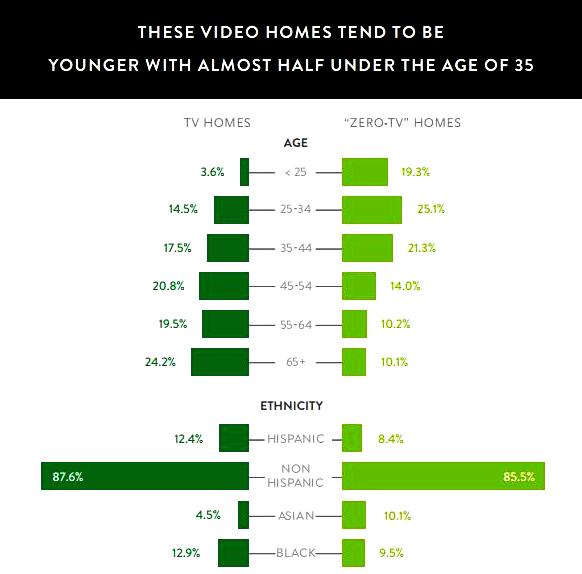As technology advances, we could easily feel the shift in trend of TV viewing. Now, number of technology companies such as Apple Inc., Samsung and more are working on their smart TV projects, which are quite different than traditional TVs. On these TVs, viewers can opt and schedule their own programming, and can surf internet flawlessly. Yesterday, Nielsen reported trends in “Zero TV” households. Here, the firm has used the term “Zero TV” for consumers, those who no longer watch video contents offered by cable or satellite providers on their traditional TVs, but they are streaming video online via computers, tablets or smartphones. In simple words, it’s the way to get information from non-traditional TV devices and services.
Today, most people (95%) in the U.S. watch TV in their living room via traditional cables or satellite options. But rest of five percent of the households, a small group of video enthusiasts, have opted tune out from the traditional TV. However, the number of “Zero TV” households in the country is currently more than 5 million, up from 3 million in 2007.
Among these 5% cord-cutting group, the traditional TVs aren’t an obsolete device so far. More importantly, 75% of these households still have at least one traditional TV set. However, they use these devices for some other activities such as gaming consoles, watching DVDs and surfing internet. Among 5% of “Zero TV” households, 67% of these homes get contents on other devices; 37% use their computer for getting contents , while 16% get via the internet and 6% via tablets.
Today, on-demand services such as Netflix and Hulu are also often used by these Zero TV households. As trend of Zero TV is ramping up–with the proportion rose from 3 million in 2007 to 5 million in 2012–people are more likely to drop their traditional TVs. The report has revealed that the “Zero TV” trends are more popular among younger population in the U.S., with almost half of people are under the age of 35.
The firm has also bifurcated the trends on the basis of ethnicity. The majority of Zero TV households are non-Hispanic (85.5%), with 10.1% Asian and 9.5% black, while 8.4% Hispanic filling out the mix.
It’s also clear from the report that “Zero TV” trends are more popular (80.9%) among the households, having no kids. On the other side, the proportion of households, those are having under 12 years and between 12 and 17 years kids, is quite low in the country, accounting for just 12.7% and 6.4% respectively.
On the other side, people, those aren’t living alone, prefer traditional TVs for viewing video contents. However, the proportion of such people are also high among those who prefer Zero TV tradition.




